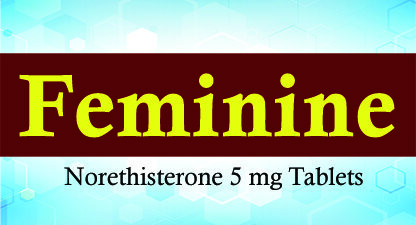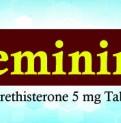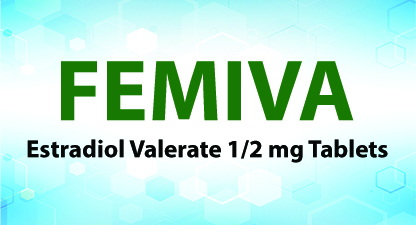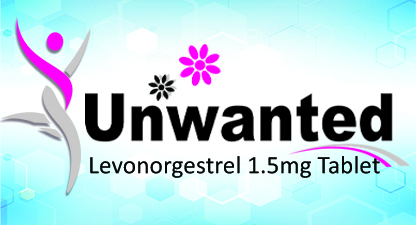FEMININE
Norethisterone (also known as Norethindrone), is a synthetic progestational hormone with actions similar to those of progesterone but functioning as a more potent inhibitor of ovulation. It has weak estrogenic and androgenic properties. The hormone has been used in treating amenorrhea, dysfunctional uterine bleeding, endometriosis*, and for contraception.
- Categories : Sex Hormone
- Share Now :
Generic Name: Norethisterone
Therapeutic Category: Endocrine-Metabolic Agent.
Pharmacological Class: Progestin
Composition: Each uncoated tablet contains Norethisterone BP 5 mg
Pregnancy Category: X
Presentation: Available in the pack size as 14 tablets X 20 blisters
Mechanism of Action
Progestins diffuse freely into target cells and bind to the progesterone receptor. Target cells include the female reproductive tract, the mammary gland, the hypothalamus, and the pituitary. Once bound to the receptor, progestins slow the frequency of release of gonadotropin releasing hormone (GnRH) from the hypothalamus and blunt the pre-ovulatory LH surge.
Indications
- Dysfunctional Uterine Bleeding (DUB) or Metropathia hemorrhagica
- Premenstrual syndrome (PMS)
- Painful periods or Dysmenorrhea
- Endometriosis
- Menopausal syndrome (in combination with estrogen)
- To postpone period.
Dosage
Route of administration: Oral
- Metropathia haemorrhagica (dysfunctional uterine bleeding): 5mg three times daily for ten days.
Bleeding is arrested usually within one to three days. A withdrawal bleeding resembling normal menstruation occurs within two to four days after discontinuing treatment.
- Pre-menstrual syndrome (including pre-menstrual mastalgia*): 10 – 15mg daily for 1week.
Treatment should be repeated for several cycles.
When treatment is stopped, the patient may remain symptom free for a number of months.
- Endometriosis: 2 tablets a day starting on the 5th day of your cycle.
If continue having small bleeds (“spotting”), the dosage may be increased to 4 to 5 tablets a day.
Once bleeding has stopped the dosage may be reduced.
- To postpone a period: 5mg three times daily, starting three days before the expected onset of menstruation.
A normal period should occur two to three days after the patient has stopped taking tablets.
- Dysmenorrhea: 5mg three times daily for 20 days, starting on the fifth day of the cycle.
Treatment should be maintained for three to four cycles followed by treatment-free cycles.
A further course of therapy may be employed if symptoms return.
- Menorrhagia* (hypermenorrhoea): 5mg two to three times a day for 7 to 10 days
- Emergency treatment to rapidly stop heavy bleeding: A dose of 5 mg three times daily for 10 days is the usual treatment.
Bleeding usually stops within 24-48 hours of starting treatment.
If bleeding is exceptionally heavy then 10 mg three times daily may be given.
This should then be tapered down to 5 mg three times daily for a week, once your bleeding has stopped.
Pharmacokinetics
Absorption: Bioavailability approximately 64%
Protein binding: Greater than 94%
Metabolism: Hepatic
Route of elimination: Urine and Feces
Half-life: 5.2-12.8 hours
Adverse Effects
- The most commonly reported side effect (which is still rare, however) is that of facial swelling.
- androgenic side effects such as acne, hirsutism*, and voice changes
- Menstrual cycle changes, breast tenderness, dizziness, nausea, headaches
Contraindications
FEMININE is contraindicated in the following populations and situations:
- Hypersensitivity to Norethisterone or any component of the formulation
- Pregnant or Breastfeeding
- Patient undergoing allogeneic bone marrow transplantation.
- Problem with your blood circulation.
- Endometrial hyperplasia* which has not been treated.
Drug Interactions
- Finasteride and Dutasteride can inhibit its metabolism
- Rifampicin and Bosentan is found to decrease Norethisterone exposure.
- Carbamazepine and St. John's wort are found to accelerate Norethisterone clearance.
*Terminologies:
Endometriosis:Painful disorder in which tissue that normally lines the inside of your uterus — the endometrium — grows outside your uterus
Menorrhagia: The medical term for menstrual periods with abnormally heavy or prolonged bleeding.
Hirsutism: A condition of unwanted, male-pattern hair growth in women.
Endometrial hyperplasia: It is caused by excess estrogen without progesterone. If ovulation does not occur, progesterone is not made, and the lining is not shed. The endometrium may continue to grow in response to estrogen. The cells that make up the lining may crowd together and may become abnormal.




